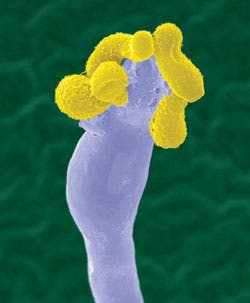Researchers have pinpointed the source of a huge environmental threat for AIDS patients – the source of a fungal infection which has been plaguing Southern California for years; it literally grows on trees. The finding was based on the research project of a 13 year old.

Cryptococcus gattii, formerly known as Cryptococcus neoformans var gattii, is an encapsulated yeast found primarily in tropical and subtropical climates. It is the cause of many pulmonary infections in humans, especially in those with compromised immune systems, like AIDS patients. Recent times have witnessed a surge of infection occurrences, arguably due to global warming. From 1999 through to early 2008, two hundred and sixteen people in British Columbia have been infected with C. gattii. For years, it’s been labeled as a threat for people living and traveling in Southern California.
“Just as people who travel to South America are told to be careful about drinking the water, people who visit other areas like California, the Pacific Northwest and Oregon need to be aware that they are at risk for developing a fungal infection, especially if their immune system is compromised,” said Deborah J. Springer, Ph.D., lead study author and postdoctoral fellow in the Center for Microbial Pathogenesis at Duke University School of Medicine.
How the fungus’ location was found is quite an interesting anecdote. Duke’s chairman of Molecular Genetics and Microbiology, Joseph Heitman M.D., was contacted by longtime collaborator and UCLA infectious disease specialist Scott Filler, M.D. Filler’s 13 year old daughter had a science project to do, and they both thought it would be interesting to send her out looking for the fungus in the greater Los Angeles area – without expecting much from it.
The girl set out and sampled 109 swabs of more than 30 tree species and 58 soil samples which she then sent to Springer at Duke. Springer DNA-sequenced the samples from California and compared the sequences to those obtained from HIV/AIDS patients with C. gattii infections. Much to the researchers’ surprise, specimens from three of the tree species were genetically almost indistinguishable from the patient specimens – the fungus was growing on trees.
They then worked on the teenager’s study and mapped out the growth of the fungus, potentially saving quite a few lives.
“That finding is important for long-term prevalence in the environment, because this fungal pathogen will be able to grow, reproduce, disperse spores, and serve as a source of ongoing infections,” Springer said.
Source: Duke University.


